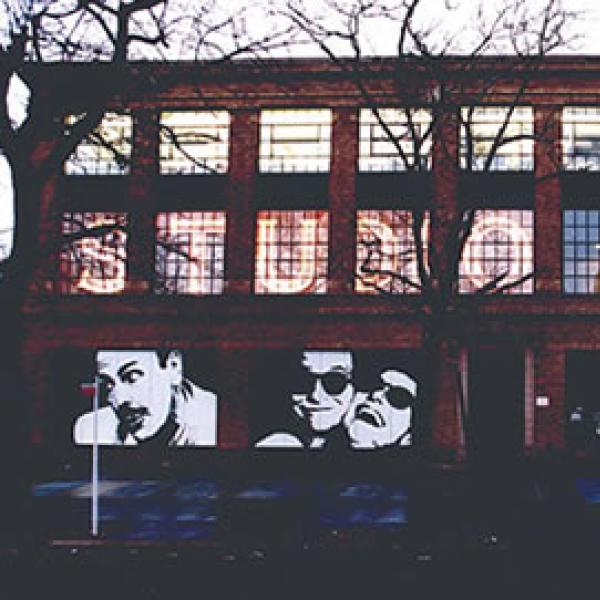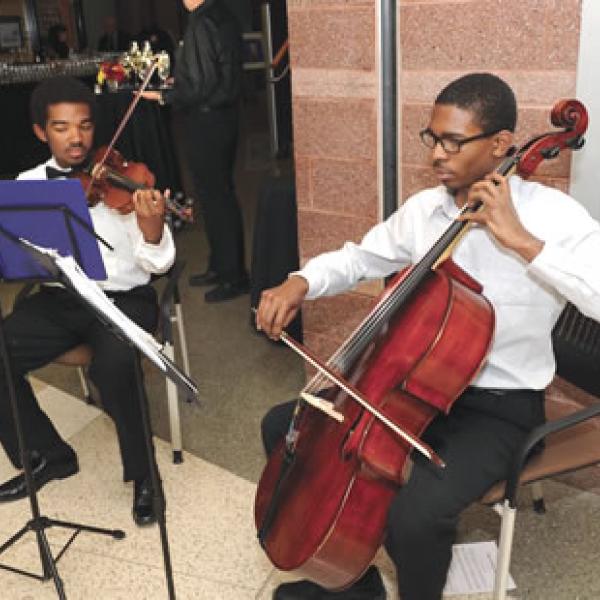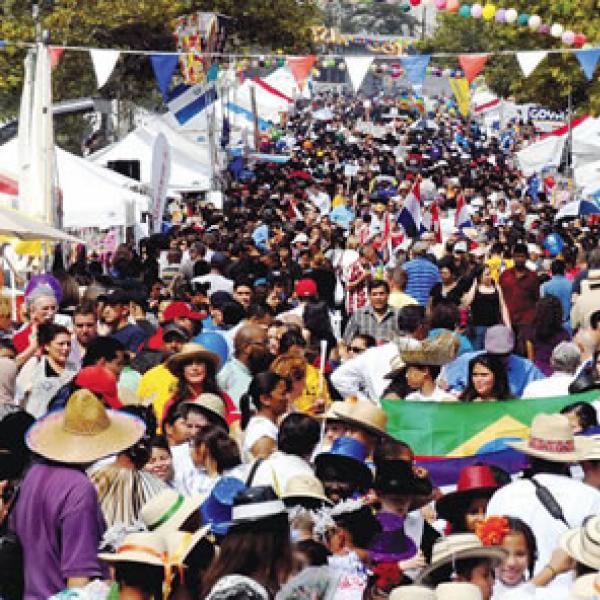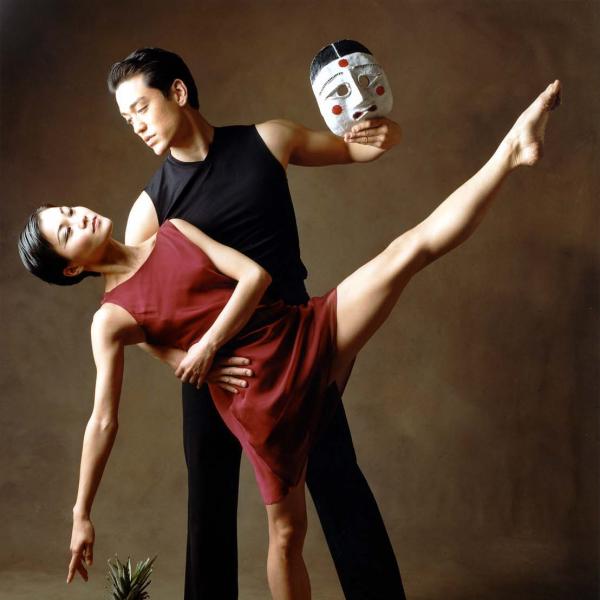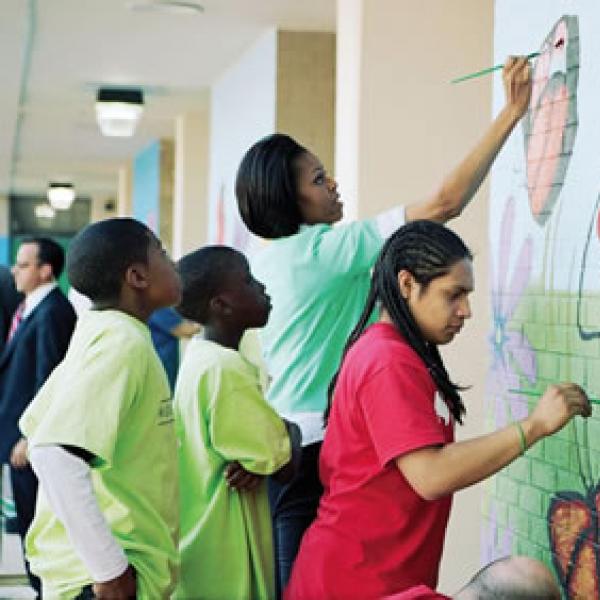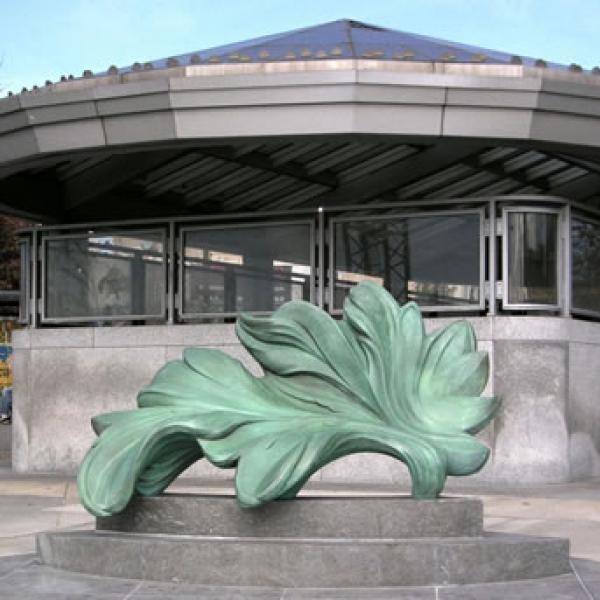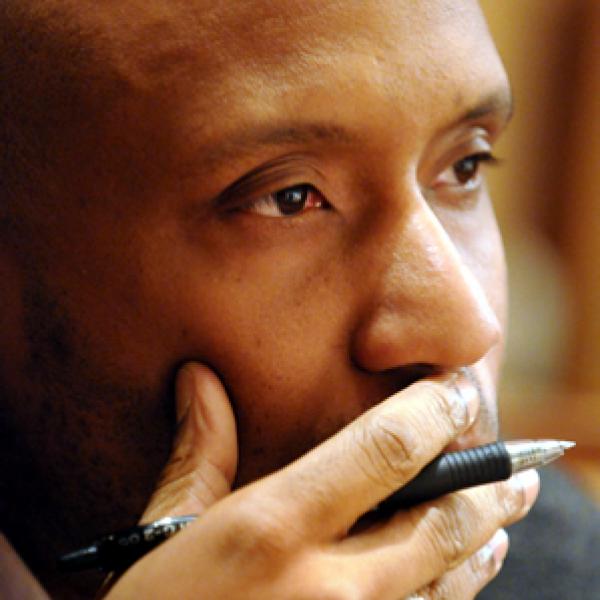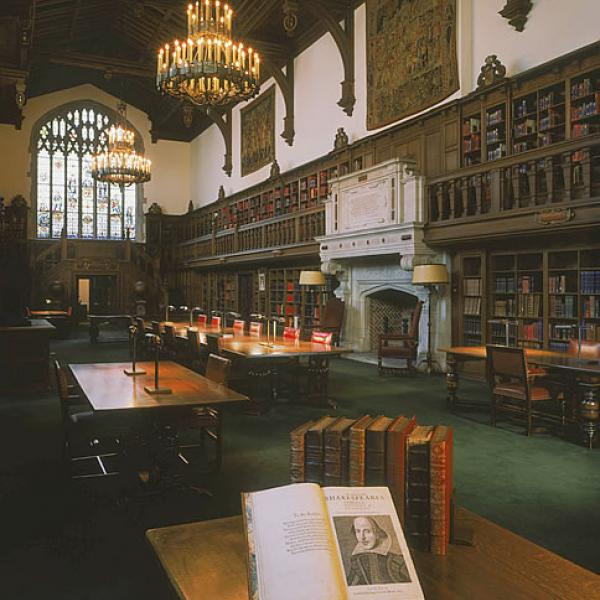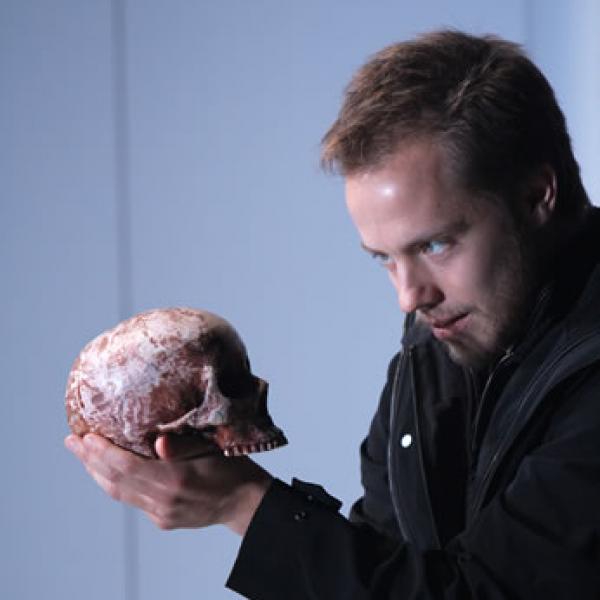We're Talking With. . . Philippa P.B. Hughes
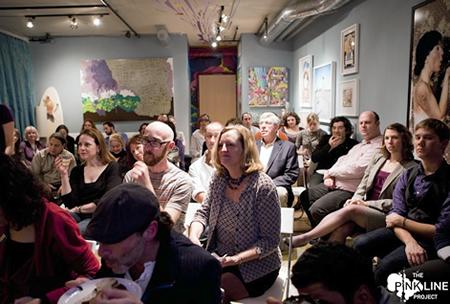
Salon Contra with Brian Jungen at Pink Line Project Headquarters (also known as Hughes apartment). Photo by Max Cook
Town and Country has dubbed her “a champion of under-the-radar artists” while the Washington Post has called her “an arch-organizer of all things arty.” If you ask Philippa P.B. Hughes herself, she’d probably answer with her job title at the Pink Line Project--Chief Creative Contrarian. In addition to having founded Pink Line—which might be described as part online local arts calendar, part local arts blog, and part presenter of live “happenings” large and small--Hughes is also a commissioner of the D.C. Arts and Humanities Commission, a council member of the Hirshhorn Museum and Sculpture Garden, and a board member of Barrelhouse Magazine and the Arlington (Virginia) Arts Center, just to name a few of her credentials. When I met up with her, we spoke for a couple of hours in her art-filled apartment (which she regularly opens to strangers for Pink Line’s up-close-with-artists Salon Contras) in between phone calls to find a new venue for an evening event that was in imminent danger of being rained out.
Simply put, Philippa loves artists.
“I’ve always been interested in visual art. I always loved going to art museums, I like music, I like all that stuff. I started Pink Line Project because I wanted to be around those people and so I started holding these little salons very informally in the early 2000s. I just invited a few people that I knew who were sort of connected to that world and then that led to knowing more and more and more until the salons just kept getting bigger and bigger. Who knew that there were so many other people out there who wanted the same thing that I wanted?
I have these little crushes on these little musicians and artists that I hang out with. I’m just so in love with these kids. They’re so amazing and this whole world is open to them and they have these amazing talents. And I just want people to hear them and see them and talk to them”.
Lesson 1: If you host it, they will come.
“In 2007, my friend and I decided we wanted to do a “happening.” So we found a raw space on corner of 14th and Church Street. There was one outlet where we plugged in four projectors and all the DJ equipment. (Laughs) It was hilarious. Hundreds of people came. We paid for it completely out of our pocket, just because it was going to be fun. We gathered cool video art and projected it on giant screens. We had this musical group called Aphrodisia, and they’re kind of electronic, and they’re all art students so it’s all kind of kooky. And we had a couple of different performance art pieces. It was one of those things where people walked out of it saying, ‘Wow, I feel like I’m in New York.’ And the same thing happened with the second one we did. The idea that somehow this was not a D.C. thing made me think, ‘Well, why not? Why shouldn’t this be a D.C. thing? These are all cool people who are right here in D.C.’”
Lesson 2: Be careful what you blog for.
“At the same time I had started this blog to share pictures with friends, but people were always asking, ‘Well, what’s going on this weekend art-wise?’ So I started posting what I was going to. Then I made the decision I was really going to focus on a lot of art postings. So long story short, that blog turned into the Pink Line Project website, which is basically a comprehensive calendar of every cool arty thing that’s happening in D.C. that’s not just Smithsonian stuff or commercial gallery stuff. The goal is to list things that people would not normally know about unless you happened to be on the right mailing list or happened to be “in the know. ”
Lesson 3: Just go ahead and fill the void.
“I used to write everything on the Pink Line Project website myself, and then I got smart and started getting other people to write things. Anybody can contribute anytime .Some of it is reviews of shows, and some of it is just to talk about what’s creative in DC. And I really want more stories about what’s cool and interesting in DC. I’m more interested in human interest type stories and not just a review of a show. In our media, like the Post or the City Paper, they don’t do that much coverage of visual art. I want to help fill that void a little bit. Nobody really covers enough. Again, for me, my purpose is to show that there’s a lot of cool stuff happening here. Here, our world is politics, and so all our energies and resources go to politics and what politics means. In places like New York or LA, they integrate art and culture into their lives more because it’s important. We don’t seem to hold artists up the same way people do in other places.”
Not only does DC need more mid-sized arts spaces in which artists can make and show their work, but we more places for artists to live.
“One problem with our art scene is that there is a disconnect between this very institutional federally funded art and this sort of underground-ish scene. And there’s not much in between. What’s in between the Kennedy Center and the 9:30 Club? Somehow little spaces need to be encouraged. Everybody complains about the cost of the space so that’s a real problem. I keep going back to the idea that there’s got to be a way to make it easier for arts organizations of any size to have space--because if you don’t have space, it’s really hard to do anything. I purposely don’t want a space for myself, and I try to find these little underground-ish and raw spaces. But most people cannot do that--they need affordable space. I don’t know how to do that. Perhaps there are tax incentives that the city can give?
The other thing I’ve been thinking about is that it’s not just about space in which to perform or to show your work. You have to live among the artists--and the artists have to live among us--in order to really feel inspired by them. And so, again, it goes back to this cost of living problem, cost of space. Artists keep getting pushed out. It’s a bigger societal problem too. I was reading about how some very high percentage of our fire department and policemen don’t live in the city; they live in the counties. What if there was some catastrophe and they couldn’t even get to us?”
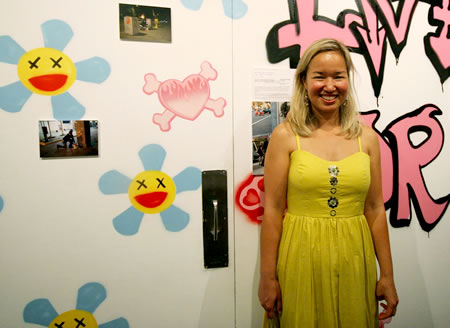
Philippa P. B. Hughes poses in front of the artwork by Corey Oberndorfer at the opening of Jeffrey Cudlin: BY REQUEST at DC’s Flashpoint Gallery. Photo by Delaney Allen-Mills |
Lesson 4: Being an arts patron can be harder than you think.
“There was a lot of resentment and resistance when I first started this. It was partially that idea of, ‘It’s like a little hobby and she’ll get tired of it after a little while and then move on to the next hobby.’ And there’re still a couple of people who just will not accept that I’m here to stay. I think because I stuck it out--and I really have worked my butt off--I do feel like over the last three years or so, I’ve really earned a place in the art scene.”
Collecting art isn’t just about stuff.
“This all began because I wanted to know artists, and it wasn’t about the stuff. We’re going to try to do more [salons and cabarets] because it’s a true showcase. And it’s getting away from having people focus on buying art, which I’m not discouraging. It’s just that I feel like contemporary art is kind of cool now, and so people want to jump on that bandwagon. They focus too much on the object: ‘Look at my piece of art; now I’m cool.’ To me, it really has to be that experience of interactivity and knowing people. I love the art objects, and I love beautiful things but I feel like it’s too easy to just focus on that and not anything more, even though the object inspires something more.”
“If you talk to a lot of the local gallerists they do feel like if they had to only depend on DC collectors, they would not exist at all because collectors here don’t totally get that connection with the artists. I don’t know if that’s true or not--maybe that’s just gallerists complaining because it is hard to sell art no matter what. On the other hand, when I go around to gallery openings, I see who is really interested in the artists. Some people show up at the gallery openings ‘cause it’s a social thing. But there are a handful of people who really are committed to D.C. artists, and who actually buy art and don’t just talk about. It’s a pretty small group of people. And then there are other collectors, but they’re buying out of the New York galleries. They go to the art fairs and that’s where they’re buying art. They’re not committed to our artists. I think it’s this perception that our artists aren’t good enough.
What Phillippa really wants is that, at the very minimum, art will make people change their “frame of reference of how they live.”
“We’re all kind of drudging along in our little life and commuting and you know exactly what your tasks are every day. You go have Happy Hour, maybe every once in a while you go to the theater, or you’ll go to see a movie. You do these different things, but it doesn’t really shift your frame of reference. My whole life is about creative living—like putting murals on the ceilings and the way I dress and how I interact with people. I’ve consciously tried to create an environment that says creativity, living creatively and not just reading about it in a book or visiting a museum and seeing some object on the wall or seeing some play that’s happening on the stage over there. Creativity has to be around you all the time and be part of your life all the time. I get that not everybody can go to the extreme, but you can get a little closer. And that’s sort of my goal. We’re so used to our little ruts that we think, ‘Oh my god, we can’t do that.’ And you do it and people grab on to it, because we want to be inspired, we want to be challenged. It’s boring not to be challenged. It’s boring to do the same thing all the time. It’s inspiring to be around these great talents, and that’s what I enjoy.


